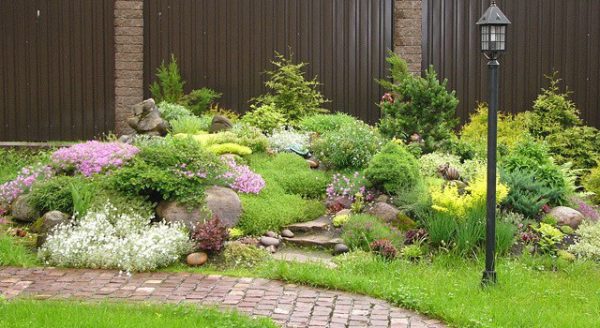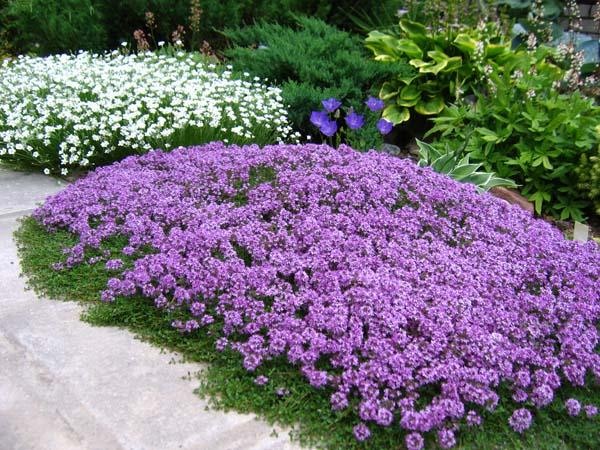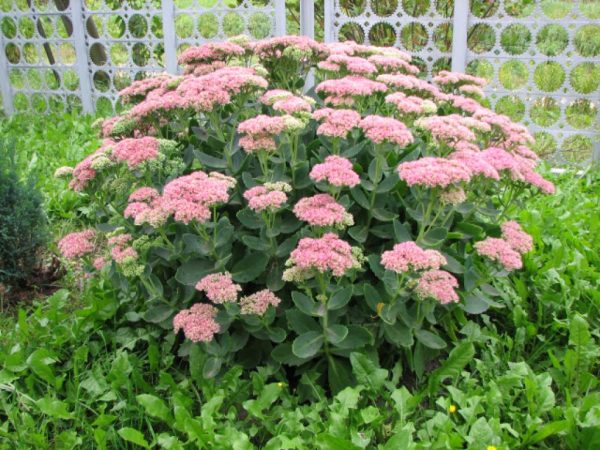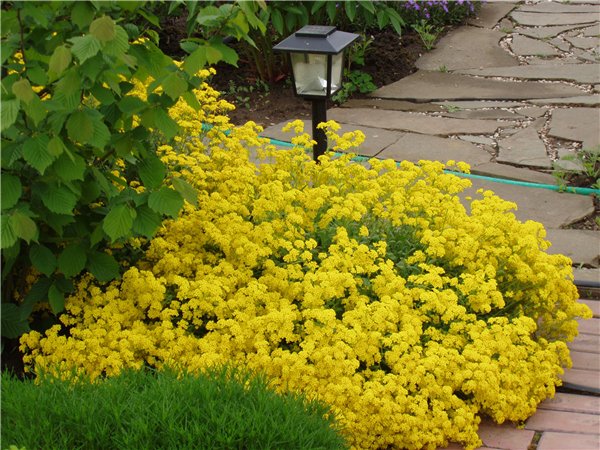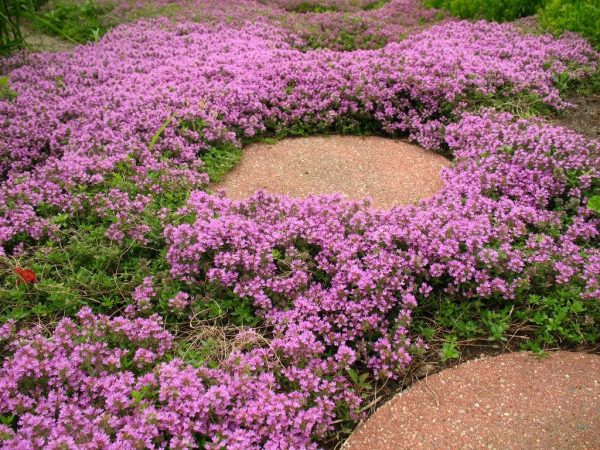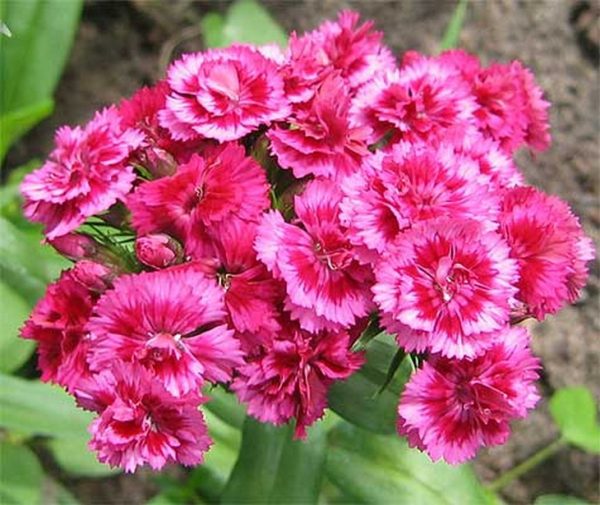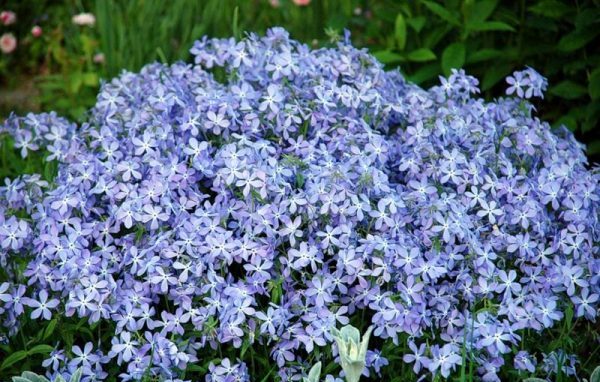We decorate the garden with ground cover perennials
Content
Application in design
Because of their unpretentiousness, ground cover perennials are very popular with landscape designers and gardeners. Their use is universal - these flowers can be equally successfully used to decorate a garden, flower beds, stone flower beds: rockeries and rock gardens. Ground cover perennials are one of the most profitable ways to decorate flower beds and individual areas of the garden, since these flowers have many advantages:
- as a rule, perennials are not demanding on growing conditions;
- care for them is minimal;
- bloom long and magnificently;
- they do not need to be planted every year;
- almost all plants have high decorative properties.
From the point of view of designers, the main function of flowers is, of course, to decorate the territory. Ground cover perennials are very often planted in rocky flower beds, along paths, nearby reservoirs, used as a curb and to fill the space between tall plants. But decor is not the only purpose of ground cover crops, and any gardener can name many practical functions that such plants perform:
- a covering of creeping perennials is an excellent way to control weeds;
- ground cover plants prevent the soil from drying out, and are the best, moreover, a very decorative mulch substitute;
- planted along the paths, creeping perennials prevent the soil from being washed off onto the surface;
- the shortest crops with rooting shoots saturate the soil with oxygen, improve its properties;
- bright and abundantly flowering perennials are the best way to create a bright spot, and thereby hide the defects of the territory;
- shade-loving perennial flowers planted in the trunks of bushes and trees will not only decorate the garden, but also eliminate the need to loosen and fertilize the soil;
- long-flowering and evergreens can be used instead of lawn grass - you do not need to mow, water often, and flowering lawns, in comparison with grass, look more colorful.
Video "Ground cover plants in landscape design"
Video review on growing ground cover plants to create an original design in a flower bed or garden.
Top 10 best ground cover perennials
Of the whole variety of species, the following plants are most often used in landscape design:
- Sedum. These are perhaps the most popular and demanded flowers for garden decoration. They are extremely drought tolerant, shade-tolerant enough, not demanding on the soil - they can grow in a completely random place, and be content only with rain watering. Of course, for abundant flowering, it is advisable to plant sedum in a sunny place, but if it is necessary to fill the space in the shade, this culture will take root there too. There are many varieties of stonecrop. Some species bloom profusely in the first half of summer, others - from August to mid-autumn, and if you plant several varieties on the site, you can enjoy a living flowering "carpet" all season.
Sedum is the shortest of all perennial flowers (6-8 cm), and the most abundant blooming, due to which they are very often used to fill space in flower beds, alpine slides, along paths.
- Saxifrage. More than thirty varieties of this plant are used in landscape design. The peculiarity of saxifrage is that they are undersized and in a short period are able to create a picturesque mossy covering in the form of balls with graceful small flowers. To decorate the garden, the most commonly used species are lush saxifrage, soddy mossy, paniculate, Arends. Saxifrags are not at all demanding on the soil - in nature they live on rocks, mountain slopes, and in flower beds they feel great on a hill, among stones. Some varieties of saxifrage are very shade-loving and are perfect for placement on the northern side of the rock garden.
- Phlox subulate. These low-growing (10-20 cm) flowers are a universal decoration of almost any landscape object. They are good because they quickly create a dense cover of greenery with bright inflorescences of pink, purple or crimson. Phloxes are completely unpretentious, grow well on dry soil, prefer sunny areas, but shade-tolerant - in nature they often grow in the shade of shrubs, thick grass. Some subulate phloxes are quite short and compact, and their emerald green leaves, similar to needles, do not lose their color even under the snow. There are also species that bloom twice a season: at the beginning of summer, and at the end. Plants are perfect for decorating flower beds, garden paths, in rockeries and rock gardens, they are ideally combined with decorative deciduous perennials.
- Alissum. Bright and abundantly flowering alissum bushes are very widely used in garden design. These perennial flowers, besides being unpretentious and easy to care for, are notable for the fact that they exude an amazing honey aroma. The culture blooms with lush tassels of various shades from the beginning of summer to frost. The most advantageous looks for honey with stones and along the paths. Some varieties of alyssum reach a height of 35 cm (rock alyssum), but there are also undersized species, for example, mountain alyssum does not grow higher than 7-10 cm.
- Thyme. Creeping thyme varieties are a real boon for designers. All varieties of thyme are very different: the leaves can be from dark green to lemon with white or yellow stripes, and the shades of the inflorescences range from white to lilac, burgundy and purple. This variety allows you to create the most original blooming compositions on the site. Low-growing ground cover varieties of thyme reach a height of 7-10 cm, grow very quickly, and form a dense cover, while exuding a strong spicy aroma. These herbaceous, abundantly flowering plants are great for decorating rock gardens, spaces between stone paths, and shade-loving varieties are ideal for decorating an unsightly garden area.
- Aubrieta. Surprisingly beautiful and lush perennial flowers, very often used in landscape design. Aubriet blooms in May-June with small purple, lilac or burgundy flowers, but its emerald foliage retains its color throughout the year. Thanks to the bright color of the flowers, similar to lace, the culture can create an amazing contrast on stones of light rocks, as well as among lighter-toned plants. Aubrieta is highly adaptable to climatic and weather conditions - it easily tolerates both severe frosts and abnormal drought. Loves sunny areas and calcareous soil, does not need frequent watering, and can grow in one place for many years.
- Pinnate carnation (grass). This is a ground cover type of carnation, quite often used to decorate space in flower beds.Cirrus carnations, unlike other varieties, are undersized (10-15 cm), bloom in June-July, and after flowering they leave a dense grassy cushion of rich green or bluish color. The culture grows rapidly, and does not require special care: once a season it should be fed, it should not be watered often, since it tolerates drought more easily than stagnant water.
- Rejuvenated (stone rose). This perennial herbaceous crop with fleshy leaves grows well on dry soils, in crevices and on stones. This is probably why plants are so often planted on alpine slides and rockeries. In garden design, many varieties of juveniles are used, differing in shape, color of greenery. The culture blooms with very beautiful yellow, pink or white inflorescences located on a low stem.
- The bryozoan is subulate. Miniature (up to 8 cm in height) perennial, something averaged between moss and grass. It is highly valued by gardeners for its decorative bright greenery, small white flowers, and its ability to form a uniform dense coating. The culture loves the sun, but it is undemanding to the soil - it grows well on sandy and rocky areas, does not need frequent watering. Due to its decorative greenery and short stature, it is perfect for planting in the foreground and along the edges of the composition, as well as along paths and on stones.
- Bells are ground cover. Bells are more often associated with tall plants, but among them there are also several creeping species (bells of Portenschlag, Pozharsky, Gargansky), which can be used for arranging rocky flower beds. These perennials reach a height of 15 cm, and are distinguished by abundant flowering - there are so many inflorescences that no greenery is visible under them.
Ground cover bells tolerate cold well, can be content only with rain irrigation, like loose sandy loam soil, shade-tolerant, but grow better in sunny areas. Bells grow rapidly, so constant control over the development of shoots is required.
Video "Description of ground cover plants"
Video recommendations for growing perennial ornamental ground cover plants. Features of caring for them and recommendations for their landing on the site.

